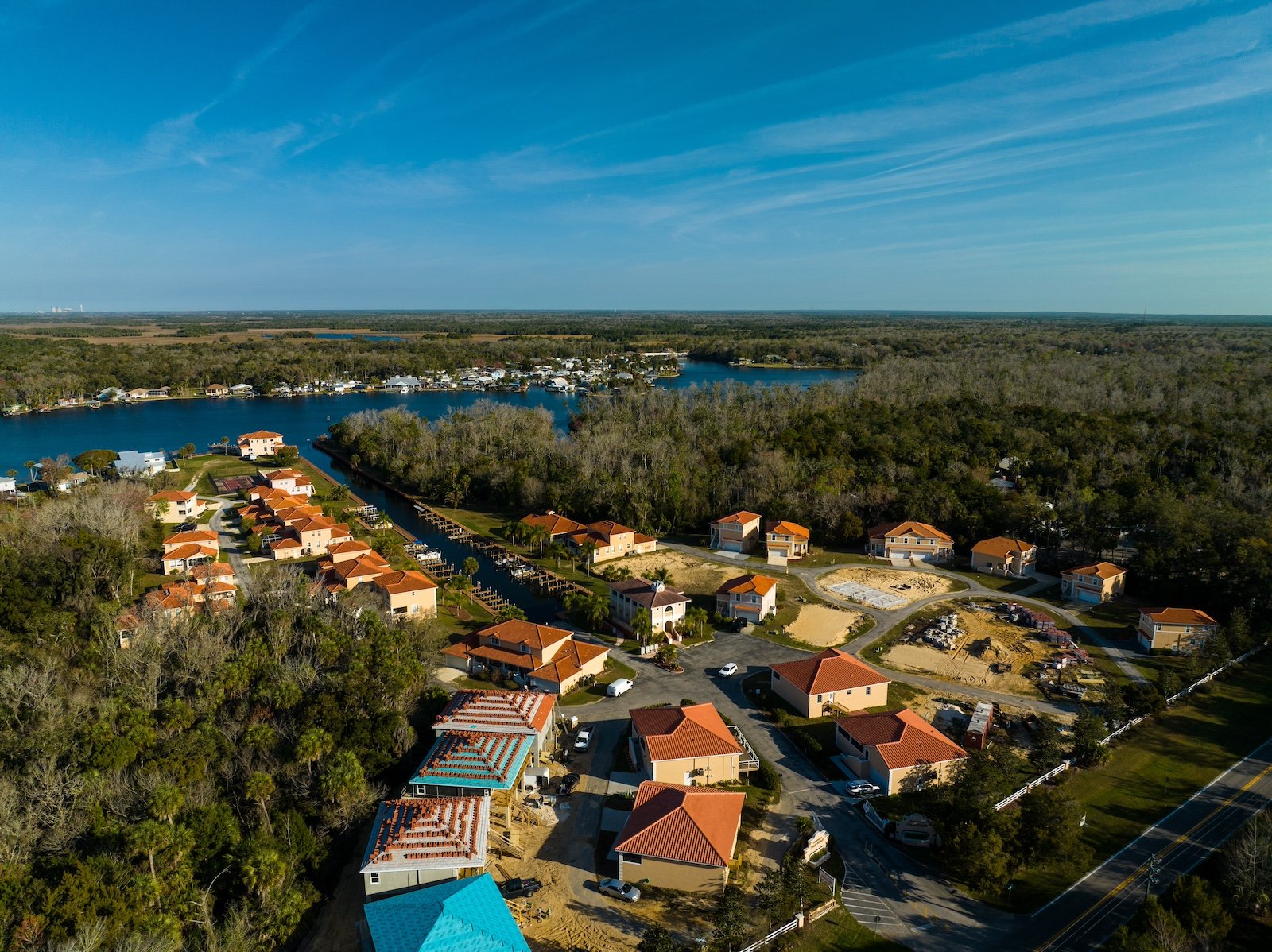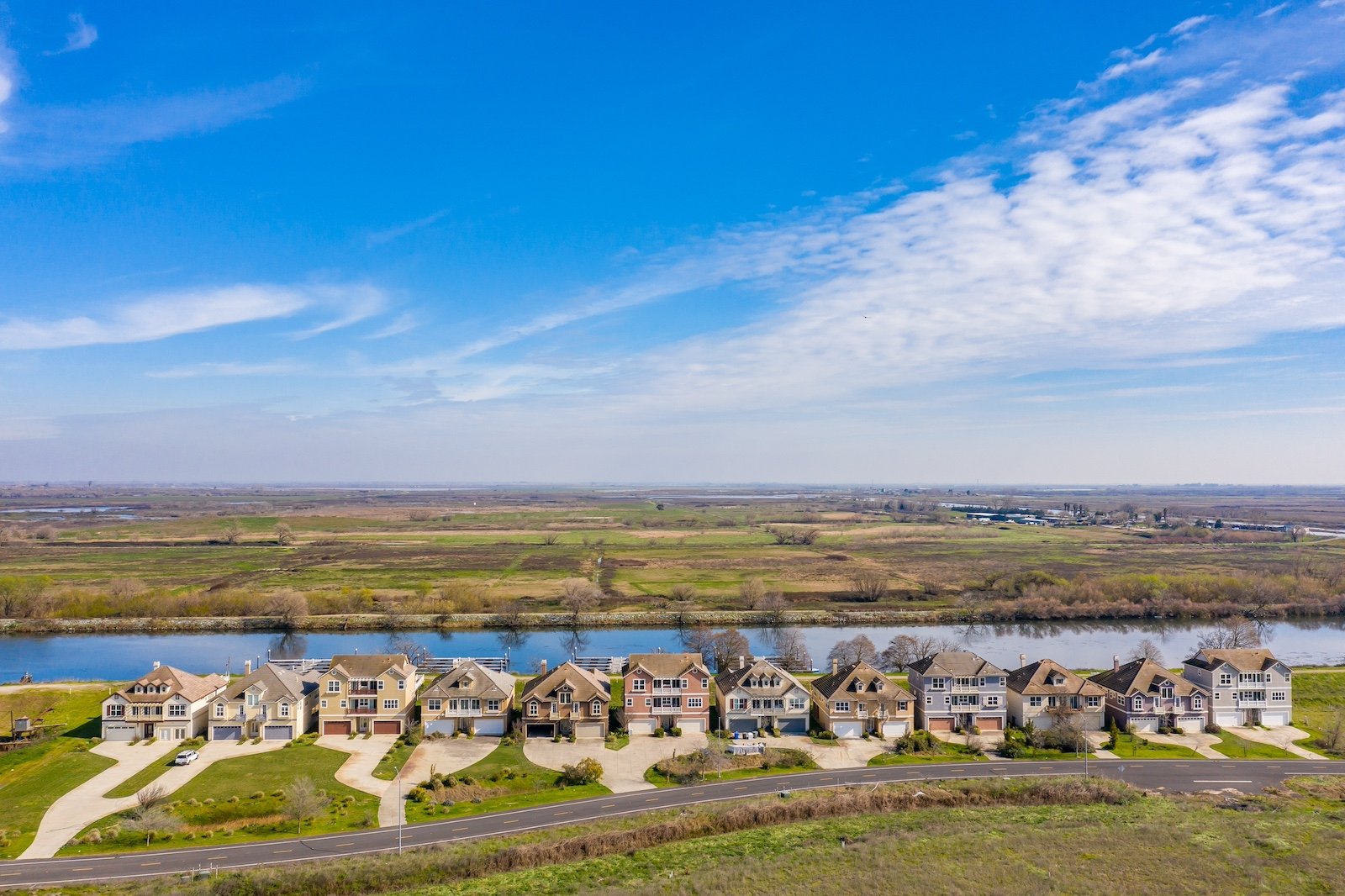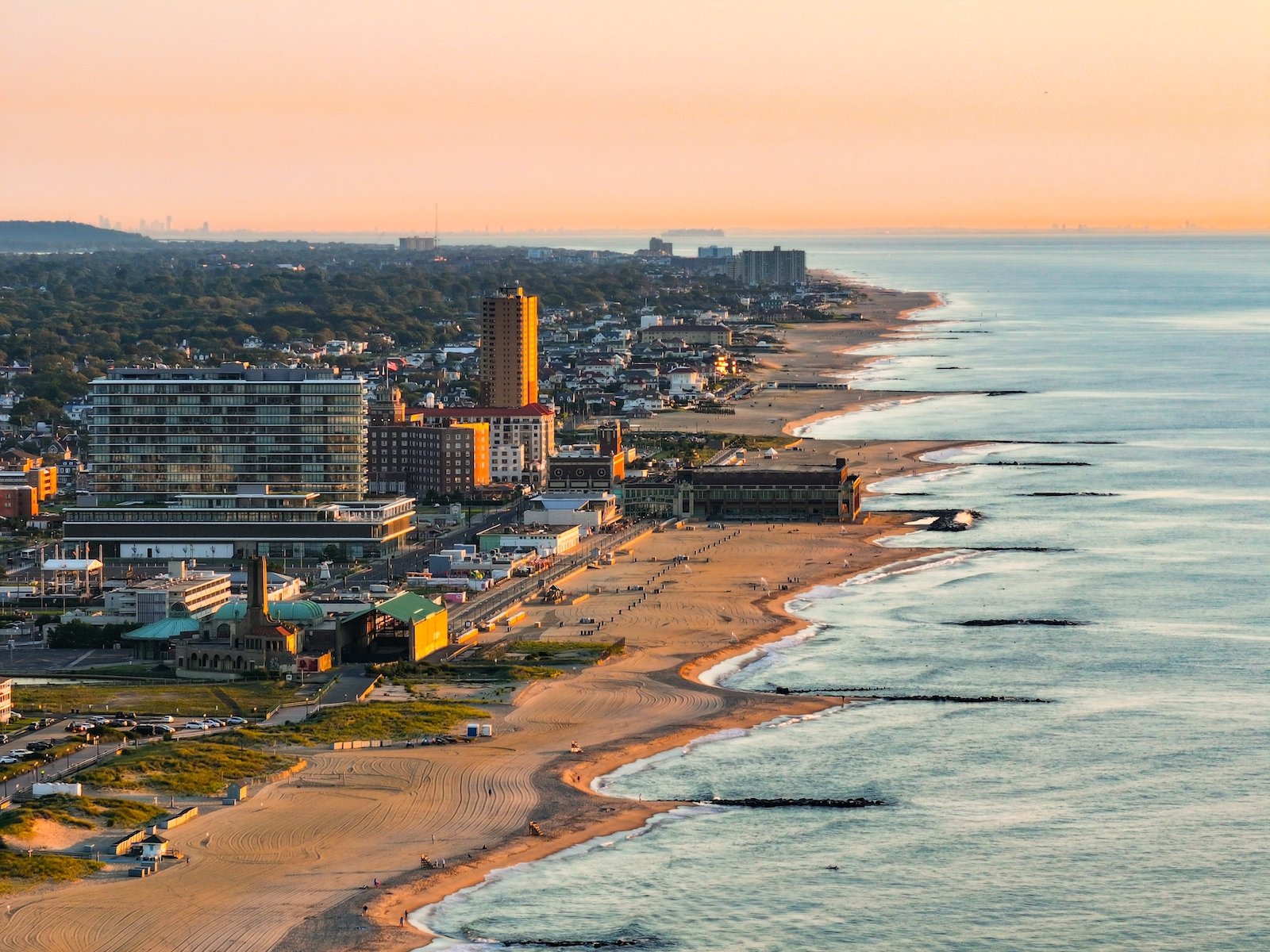While traditional factors like location, size, and amenities are primary in homebuying decisions, the impact of climate on property values is increasingly crucial. Severe weather events, rising sea levels, and shifting climate patterns directly affect both current and future property values.
A recent LendingTree survey from March 2024 found that 51% of homeowners worry about how climate change might depreciate their property values, highlighting concerns like coastal erosion and higher insurance costs. Understanding the broader climatic risks associated with a property is essential for making informed real estate decisions.
We have compiled a list of regions particularly susceptible to climate-related fluctuations and the underlying factors driving these changes.
Arizona

Arizona ranks first for flood risk and third for fire risk among the lower 48 states. This dual risk is expected to affect property values as climate change leads to more frequent and severe weather events. Furthermore, the urban heat island effect exacerbates heat issues in cities like Phoenix, where urbanization increases local temperatures, making properties less desirable in extreme heat conditions.
Florida

With millions of homes worldwide at risk of submersion by 2050, the specter of rising sea levels looms large for coastal communities. There are grave risks to coastal houses from rising sea levels, further aggravated by storm surges and hurricanes. For example, widespread flooding and erosion in Florida cause significant property devaluation, making the state particularly sensitive to these combined effects. Counties like Pinellas, Citrus, and Manatee, where significant property depreciation is predicted by 2050, appear especially vulnerable. The impact of climate-related disasters on coastal residents’ finances is becoming more noticeable, even with Florida’s residential real estate market currently experiencing strength. These disasters are becoming more frequent and severe.
Wisconsin

Wisconsin has experienced a significant uptick in severe weather events, with 61 confirmed billion-dollar disasters since 1980. These incidents, ranging from floods and droughts to severe storms and winter blizzards, underscore the growing impact of climate change on the state. Such severe weather not only raises insurance rates and inflates living expenses, but it also immediately damages property. Real estate decisions in Wisconsin consequently need property owners to exercise extreme caution when considering potential concerns associated with climate change.
California

In California, the real estate market is deeply influenced by climate-related risks due to the state’s extensive coastline and high susceptibility to wildfires. Cities like Los Angeles, Riverside, and San Francisco, which hold over $1.1 trillion in property values, are particularly vulnerable to wildfires. Additionally, with 85% of the population living in coastal counties, the threat of sea-level rise and coastal erosion is significant.
Projections suggest that by 2100, rising sea levels could put half a million people and over $100 billion in property at risk. These climate challenges, coupled with the state’s earthquake risks, create a complex scenario for property investors.
Gulf Coast

The Gulf Coast real estate market faces significant challenges due to hurricanes, storm surges, and rising sea levels. These climate-related threats impact property values, as the costs for insurance and rebuilding soar after extreme weather events. Louisiana is particularly at risk, with projections indicating the potential loss of nearly half its coastal wetlands by 2100. Financial damages from climate-related disasters in the region could increase from $14 billion to $23 billion annually by 2030. Consequently, these factors critically influence investment decisions and can lead to potential depreciation in property values and higher insurance and flood risks for buyers.
New Jersey

While a significant economic driver, New Jersey’s extensive coastline is increasingly threatened by climate change. The number of homes at risk of annual flooding has surged by 110% since 1980, with an additional 62,000 to 86,000 properties now vulnerable to hurricane-induced flooding. This escalation, alongside the heightened frequency and intensity of storm surges, has eroded property values in coastal regions like Jersey City and Hoboken. Counteracting these risks requires investment in flood mitigation measures and energy-efficient upgrades.
Texas

The future is uncertain for Texas’ coastal communities. According to a news report by Austin American Statesman, sea levels in the state would rise faster than usual, increasing the risk of storm surges and coastal floods over the next 75 years. This, along with hurricanes’ increased frequency and intensity, only makes matters worse. Property desirability and financial viability in affected areas can presumably decline as extreme weather events become more frequent and severe.
North Carolina

Rising sea levels have put these low-lying barrier islands—which are already vulnerable to the fury of Atlantic storms—into greater danger. Sea levels have ascended by several inches in recent years, raising the risk of coastal erosion and floods and threatening the region’s real estate market.
The recent collapse of a $650,000 beachfront home on North Carolina’s Outer Banks provides a sobering reminder of the growing challenges of living by the sea. The fact that this is the sixth occurrence of this kind in the last four years has raised concerns about the region’s inherent climate change susceptibility. Although overall property values may continue to rise, the long-term worth of coastal properties may become more erratic.
Alabama

Alabama is geographically exposed to severe weather hazards. The state has borne a heavy financial cost owing to sea level rise, with property prices crashing by $157.9 million from 2005 to 2017. This trend is anticipated to surge, and coastal flooding will occur more frequently and severely as sea levels rise. This vulnerability is further enhanced due to the state’s fair share of exposure to extreme weather, including hurricanes and storms, especially in the late summer and early fall.
Georgia

With its position within the “Deep South” region, Georgia is at the forefront of states grappling with the intensifying impacts of climate change. Projections indicate that by 2050, some areas in the Southeast may experience sea levels rising 16 to 23 inches above those recorded in 2000. With such a projection, the coastal communities brace for the imminent threat of more frequent and severe high tide flooding—up to ten times the current rate.
As the threat of flooding and erosion grows, insurance premiums will likely increase, making property ownership more expensive. Moreover, the overall desirability of coastal properties may decline as buyers become increasingly wary of climate-related risks.
Tennessee

The conventional understanding of “Tornado Alley” is changing. There has been a noticeable increase in severe weather events in states such as Tennessee, Mississippi, Louisiana, and Alabama, suggesting that tornado activity is shifting southward. This change in geography has significantly impacted the local real estate markets. Property values in tornado-prone areas may decrease if tornadoes grow more often and more intense. Due to the increased risk, potential investors and buyers will probably seek reduced home prices. Furthermore, the probability of severe weather events may raise the cost of insurance for businesses and homeowners. The added financial strain may turn off more prospective purchasers and lessen the area’s allure as a real estate investment location.
Philadelphia

Philadelphia’s real estate market is increasingly impacted by climate change. Due to rising sea levels and severe precipitation, the city faces heightened risks of coastal and inland flooding. The Delaware and Schuylkill rivers, both tidal, are increasingly prone to inundation, with the number of high-tide flooding events projected to increase dramatically in the coming decades.
Additionally, projections suggest an increase in scorching days, with temperatures over 95 degrees Fahrenheit potentially occurring 17 to 52 times annually by 2100. This shift in climate will likely boost the demand for cooling systems, driving up energy consumption and operational costs for properties.


